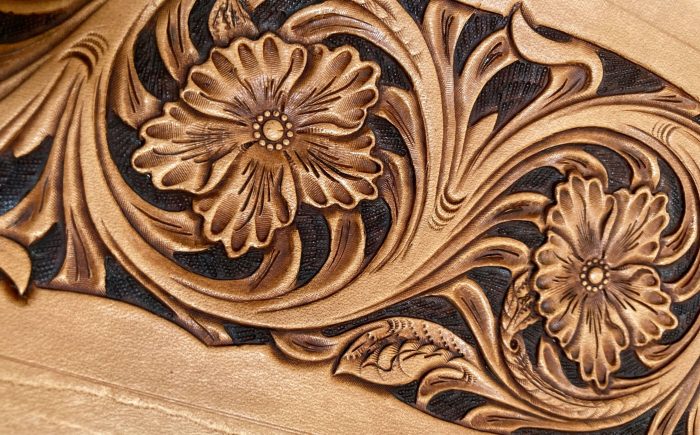Copyright GK Dynamics Inc., All Rights Reserved.

Copyright GK Dynamics Inc., All Rights Reserved.



Formal beauty is defined as follows:
A way of emphasizing the beauty by sticking to a well-established procedure.
Beauty that exists in sophisticated processes and styles.
Around the 19th century in North America, people started developing a carving technique, based on the method of decorating saddles, that transfers images of plants and flowers presented in photos onto leather in relief. This decoration style, which was first established at a saddle maker in Arizona, was shared by other manufacturers in Sheridan, California and other places in the United States and then evolved into unique styles to meet the changing demands of the times. The more established the style became, the more difficult it was for people to break out of the mold in response to the changes it went through in different times and regions. Presumably, creators at the time were struggling to add new elements while following the traditional style at the same time.
Styles are different from rules, so there shouldn’t be right or wrong for them. That said, if creators fail to meet the expectations of their customers, their styles can’t be accepted. On top of that, something new always needs to be added. For that purpose, creators are required to perform a delicate balancing act of fulfilling customers’ expectations and adopting original viewpoints suitable for the times and regions they live in. Because the newness cannot come into effect without accepting the past, we should start by showing respect for the past to create something new. That’s not limited to the formal beauty but holds true for everything we produce.
Shogo Aoki
CMFG Design Dept.
Operating Officer